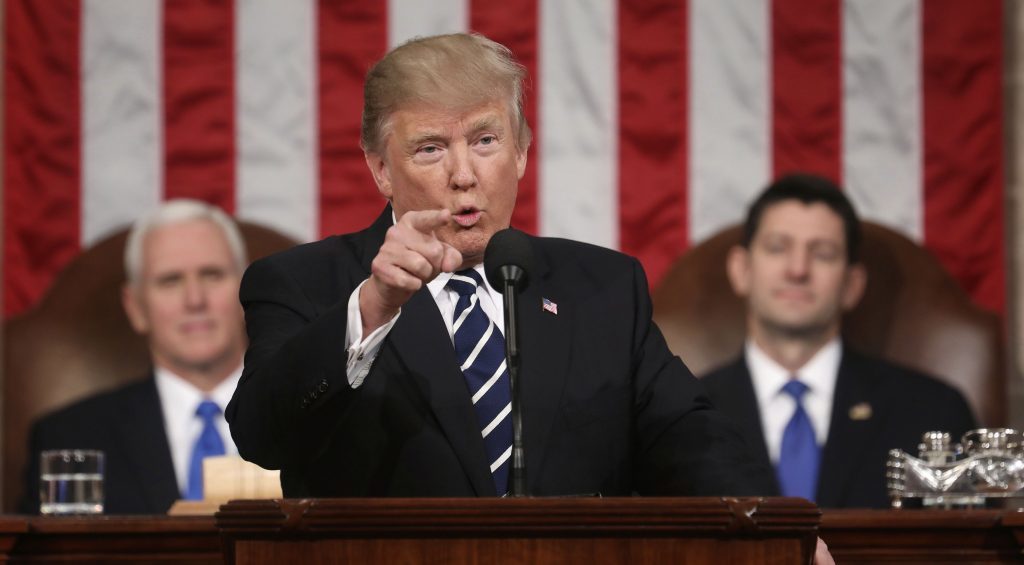
The Trump administration is preparing to unveil as soon as this week an expansive offshore oil plan that would open the door to selling new drilling rights in Atlantic waters, according to people familiar with the plan.
President Donald Trump ordered his Interior Department to write the new blueprint with the aim of auctioning oil and gas drilling rights off the U.S. East Coast — territory that his predecessor, former President Barack Obama, had ruled out. The Interior Department’s coming draft proposal, an initial milestone in replacing the Obama-era sale plan, dovetails with the oil industry’s push for new places to drill, said the people, who asked not to be identified before a formal announcement.
Trump’s proposal would span the years 2019 to 2024, replacing the Obama plan, which runs through 2022.
Industry leaders have lobbied the Trump administration to sell drilling rights in the U.S. Atlantic as a way to complement existing oil production in the Gulf of Mexico. It is not clear how much oil and gas exists off the East Coast, because existing data stems largely from decades-old geological surveys and more than four-dozen wells drilled in the 1970s and 1980s.
Oil companies also want the Trump administration to sell drilling rights in Arctic waters north of Alaska and in the eastern Gulf of Mexico — where federal law bars new oil leasing through 2022. Lawmakers from Florida have fought efforts to expand offshore drilling they say would imperil the state’s tourism-tied economy and are seeking to extend that ban.
While most U.S. waters are technically open for oil and gas development, the activity can only take place on leases sold under the government’s five-year plan. The legal process for assembling that drilling blueprint starts broad, with the number of potential sales and the available acreage often whittled down as regulators move from an initial draft to a proposal and ultimately, the final program.
Industry trade groups have urged the government to take an inclusive approach and leave all options open for now, because once offshore areas are yanked out, they can’t be easily restored.
“It’s important that the federal government make available new prospective areas to search for oil and gas to ensure we keep up with future demand,” said Dan Eberhart, chief executive officer of drilling services company Canary LLC. “It doesn’t mean we should necessarily drill everywhere, but it is important to know what resources we have so we can make informed decisions about the best places to drill.”
Environmentalists argue it would be shortsighted for the Trump administration to keep considering new oil drilling off the U.S. East and West coasts, given deep opposition from local residents worried about potential oil spills jeopardizing fishing and tourism.
“The Trump administration is trying to grab the pristine ocean waters Americans own and hand them to polluters for exploitation and ruin,” said Alexandra Adams, a senior advocate with the Natural Resources Defense Council. “We will fight this with our coastal communities who’ve made their opposition clear: They won’t subject their economies and their whole way of life to the dangers of a devastating oil spill.”
Recommended for you
